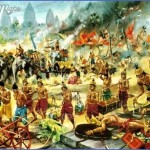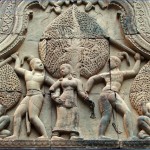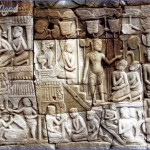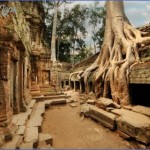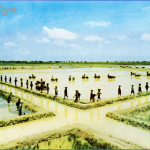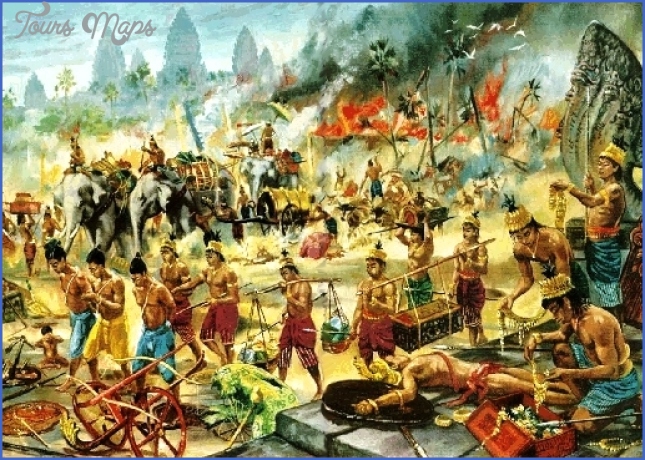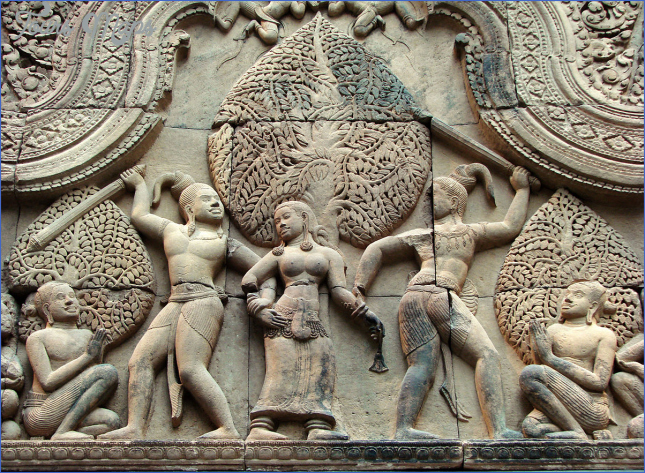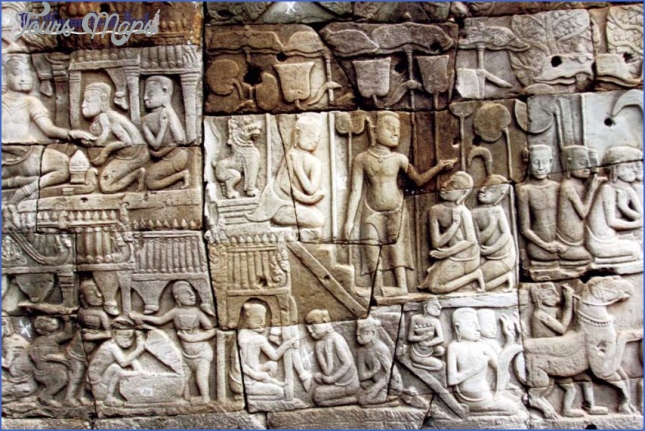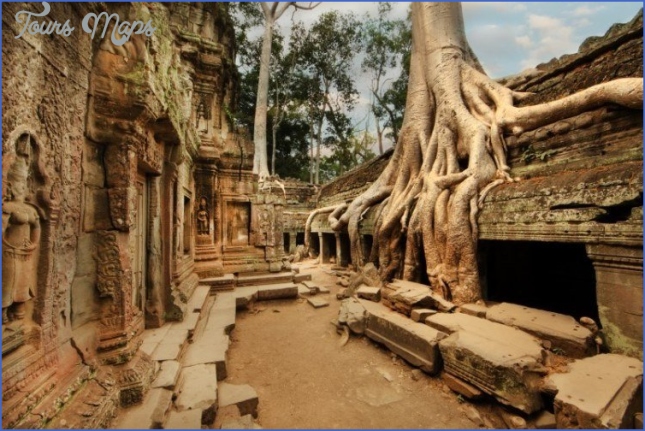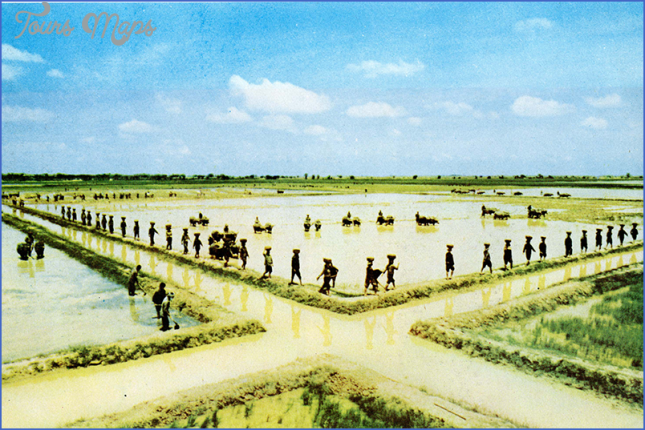The report of Chou Ta-Kuan about the customs of the people of Chenla (Cambodia), which you are reading, is one of the priceless documents on Cambodian history. It is one of the most frequently cited sources when historians wrote about Cambodia.
As Cambodian students, who studied Cambodian history in school, we usually heard or knew of Chou Ta-Kuan and his report about the customs of the people of Cambodia. However, most of the references of our study usually came from the translation of secondary source–namely the French text by Paul Pelliot, not from the primary text of Chou Ta-Kuan.
In his preface, Mr. Pelliot indicated that his effort to search for and translate Chou Ta-Kuan’s report on the customs of the people of Cambodia followed an earlier effort of Mr. Abel Remousat? who had translated and published Chou’s account in 1819. However, Mr. Remousat’s translation was not as detailed; hence, successive efforts were made to improve and enhance the earlier translation.
Khmer History Photo Gallery
Mr. Pelliot spent a number of years in China to study and translate Chou Ta-Kuan’s account of his visit to Cambodia at the end of the 13th century. Mr. Pelliot’s manuscript of the translation was published in 1902 in the Bulletin de l’Ecole Francaise d’Extreme Orient (BEFEO). In 1951, Mr. George Coedes, director of the l’Ecole Francaise d’Extreme Orient once again published Mr. Pelliot’s manuscript in a booklet with additional comments onto the text.
We, Cambodians, are very grateful to those experts who had spent times and efforts to research and dig up this historically priceless document for us to study. However, because those researchers/translators were not Cambodians, we are not fully satisfied with what had so far been accomplished. We always feel that if only we could translate Chou Ta-Kuan’s text directly from Chinese to Khmer (Cambodian) instead of from secondary sources, it would not only satisfy our ego but also be more accurate.
During my earlier years of education, I had studied Chinese for several years. Though my Chinese is now not as proficient (due to less frequently use of the language), I have nevertheless kept up my Chinese writing throughout my life and kept those writings such as the Chinese names of places, materials, and publications as documents for research.
In 1962, I had the opportunity to head a delegation of Cambodian writers on a cultural mission to visit China. Before my arrival in China, I had conceived a plan to ask my Chinese counterparts to help me locate and see the original scripts of Chou Ta-Kuan’s visit to Cambodia in the 13th century. When I met with the Chinese Minister of Culture, who was also the head of the Association of Chinese Writers, I had asked if he would fulfill my wish to see and make copy of the original document of Chou Ta-Kuan’s manuscript of the customs of the people of Cambodia. The Chinese Minister of Culture agreed to my request.
That night, I was so happy and looking forward to the day when our Chinese hosts would take us to visit their National Library where Chou Ta-Kuan’s manuscript was kept. Five days later, I was taken to visit the Chinese National Library. Chou Ta-Kuan’s report was kept in the “rare books” section. The library’s director, along with two colleagues, one was the head of the rare book section and the other was a 69 year-old expert on history of the Far East named Tea Siu Meng, were waiting to show me the materials I came to look for. It was Mr. Tea Siu Meng who had pulled out a number of books which had references to Cambodia to show me. I notice that most of those books were published in the 14th, 15th, 16th, and 17th centuries.
In our conversation, my Chinese hosts asked me a lot of questions as if they were probing to find out whether I was a serious researcher or just someone who wanted to see those rare documents. Fortunately, I had read a lot of documents about Sino-Cambodian relationships. Also, before my departure for China, I had made detailed notes on the history of Sino-Cambodian relations, since my mission was about the history of the two cultures. So, I provided the answers to most questions quickly. Afterward, I was introduced to another Chinese academician of history.
Among the books that I was shown, some had only one or two-page references on Cambodia. Only one book, written during the Mongol Dynasty, provided a detailed description about sending envoys to Chenla (Cambodia). It was in that book that Chou Ta-Kuan’s report about the customs of the people of Cambodia was published. My Chinese hosts arranged to have all 63 pages of Chou Ta-Kuan’s report made into a microfilm for me to bring back to Cambodia.
After returning to Cambodia, I had managed to print the entire Chou Ta-Kuan’s report on papers and attempted to translate it. But, alas, I had read it many, many times and still could not make out the meanings of it. The report was written in classic (ancient) Chinese which was quite different from modern Chinese. I decided to bind Chou’s paper-copy report into a booklet and put it in the office of the Cambodian Association of Writers in hoping that some day someone would be able to translate that report into Khmer. However, two years later, that booklet had disappeared without a trace. Fortunately, I still had the original microfilm, which the Chinese had given to me. Thus, I made another paper copy of the report and decided to find a way to translate it so that Cambodian researchers would have another text of Chou Ta-Kuan’s report translated directly from Chinese into Khmer in comparison with the French or English version.
The task of translating Chou Ta-Kuan’s report puts a lot of burden on me, for I had to look for someone who knew how to read and understand classic Chinese. A friend of mine named Ung Lai, who is a novelist and an expert in translating classic Chinese novels and Kongfu movies, agreed to help me translating Chou Ta-Kuan’s report. Ung Lai translated the whole report for me. For some words, which he could not fully grasp their meanings, he would consult with the Chinese dictionary and wrote down explanations in Khmer for me to analyze and decide on their precise meanings.
Beside Ung Lai, another friend of mine named Ma Eart, a former teacher who used to teach Khmer to Chinese students, also helped me with the translation. After editing both Ung Lai’s and Ma Eart’s versions in comparison with the original Chinese text, I took the final version to compare against the French text of Chou Ta-Kuan’s report which was translated by Mr. Pelliot. However, I was still not satisfied with the final version; so I tried once again to look for someone else to provide me with more consultation.
One day, I found my former Chinese teacher named Tang Suy Kong who was then 71 years old. Mr. Tang Suy Kong was a former Chinese professor of literature who was very well versed in Chinese classic literatures, especially, ancient China. I had asked for his help in comparing the translated version of Chou Ta-Kuan’s text against the original Chinese text to look for errors and inaccuracies. The great Grandpa happily agreed to help me. Mr. Tang read and explained to me one paragraph at a time to refine and revise every word in the text to the best of our knowledge. For some words which were too vague to comprehend, we would create footnotes to explain them. We spent 3 months working on the final text before submitting it for publication.
We should also notice that the Chinese language has different dialects according to local regions. For instance, Beijing, Shanghai, Kwangdong, and Hukien, etc., are all having their own distinctive individual dialects. I would like to point out that Chou Ta-Kuan was born in Veng-ta, Jikiang province which was located in Southern China. Thus, his Chinese dialect would be distinctive from those who lived, say, in Northern China.
With regard to the Chinese ethnics who had immigrated to and live in Cambodia during Chou Ta-Kuan’s visit and subsequent years, no one appeared to come from the same region as Mr. Chou’s. Most of them were from Kwangdong province. The Cambodians called them “Chen Katang” who spoke a dialect known as Cantonese. Thus, most words referring to names of places, things, and many other aspects of Cambodian lives which Chou Ta-Kuan wrote down in his report reflected a mixture of both Cantonese and the dialect of his mother tongue.
In the translation of Chou Ta-Kuan’s report, we decided to base it on Cantonese because the majority of ethnic Chinese who have lived in Cambodia (then and now) spoke Cantonese. Also, we noticed that most Cambodian words, which derived from Chinese, were usually pronounced according to the Cantonese dialect. Thus, I would like to apologize before hand to all readers if my colleagues and I had overlooked any word, content, or context of Chou Ta-Kuan’s report in our translation.
Li Theam Teng Introduction: This report was written by Chou Ta-Kuan during the reign of the Ngon Dynasty, and, afterward, Mr. Hao Kong republished it during the reign of the Ming Dynasty. The entire report is as follow: Chou Ta-Kuan’s Preface:
The people of Chenla or Chamla called themselves Kanpaichih. But according to the writing of European explorers, they were called Kampuchih which also sounded similar to Kampucheh.
We departed from Oujiv by river passing through Mang Kouy and Guangdong provinces. After reaching the sea, we traveled across Chit Jiv and Kav Jiv seas. We then reached the city of Champa. We continued traveling for about another one half of a month before reaching Cheng Pov “Champou” which was the border outpost of Kampuchih. After leaving Cheng Pov, we traveled past the Kunlun Sea before reaching a delta area where there were several mouths of rivers flowing into the sea. Among these rivers, only one was accessible to seafaring ship. The rest was shallow and not accessible to big ships.
Around the areas where the river mouths reached the sea, the beaches were covered with yellow sands. Also, there were a lot of thick bushes and small trees growing among the reeds which could be found all over the places. It was kind of difficult for travelers to remember the right entrance to navigate inland.
After making our way into the river, we traveled about V month before reaching a province called Cheh Nam (Kompong Chhnang). Passing through Cheh Nam, we traveled down the river for about 10 more days crossing the villages of Pulov Ching (Middle Village), Hut Ching (Buddha’s Village), and a fresh water sea before arriving in the city of Kang Ping Chou (Kampeng Chhouk?). This city covers an area of about 50 (square) li’s (1 li = 0.5 Km). According to some books written by the Europeans, they said that this country had a territory stretching more then 7,000 li’s reaching northward to the border of Champa which has a distance of about 15-day journey. To the west, it bordered Siam which has a distance of 15-day journey also. If we went southward from where we were, we would reach the city of Huong Ou in 10 days. To the east, this country bordered the China Sea. This country had maintained trade relationships with our country throughout the years.
After China (during the Mongol Dynasty) had asserted her influences over both land and sea, Marshall Jun Tov, who stationed in Champa, had sent two envoys, namely, Mr. Hou Pek Hov and Mr. Chai Hov, to Chenla. However, the two envoys were imprisoned by the ruler of Chenla. Afterward, in the 6th month of 1295, Emperor Ngon Jing once again decided to send an embassy mission to Chenla. I was assigned to accompany this embassy mission.
We departed from Ming-chou in the 2nd month of the following year. On the 15th day of the 3rd month, we arrived in the city of Champa during which we met the high wind. Our journey was hampered by this high wind a little bit. In the 7th month, during springtime, we arrived in Chenla which had warmly welcomed us.
We returned to China during the reign of Emperor Tai Tek (1297).
In the 6th month, I embarked on a ship returning to China. The ship arrived in the harbor of Chih Ming on the 12th day of the 8th month. Though it is certainly impossible for us to gain detailed knowledge on the customs and social functions of Chenla in such a short sojourn, many aspects of them, however, could be described as follow:
Maybe You Like Them Too
- Top 10 Islands You Can Buy
- Top 10 Underrated Asian Cities 2023
- Top 10 Reasons Upsizing Will Be a Huge Travel Trend
- Top 10 Scuba Diving Destinations
- World’s 10 Best Places To Visit

